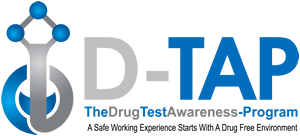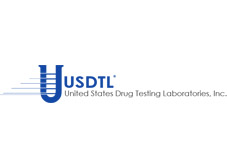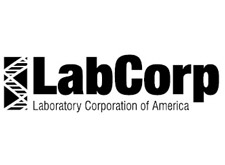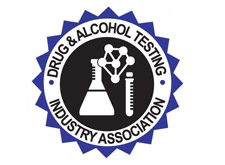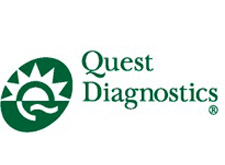Opiates (OPI)
Opioids are commonly prescribed because of their effective analgesic, or pain-relieving, properties. Medications that fall within this class – sometimes referred to as narcotics – include morphine, codeine, and related drugs. Morphine, for example, is often used before or after surgery to alleviate severe pain. Codeine, because it is less efficacious than morphine, is used for milder pain. Other examples of opioids that can be prescribed to alleviate pain include oxycodone (OxyContin), propoxyphene (Darvon), hydrocodone (Vicodin), and hydromorphone (Dilaudid), as well as meperidine (Demerol), which is used less often because of its side effects. In addition to their pain-relieving properties, some of these drugs – for example, codeine and diphenoxylate (Lomotil) – can be used to relieve coughs and diarrhea.
Opioids act by attaching to specific proteins called opioid receptors, which are found in the brain, spinal cord, and gastrointestinal tract. When these drugs attach to certain opioid receptors, they can block the transmission of pain messages to the brain. In addition, opioids can produce drowsiness, cause constipation, and, depending upon the amount of drug taken, depress respiration. Opioid drugs also can cause euphoria by affecting the brain regions that mediate what we perceive as pleasure.
Chronic use of opioids can result in tolerance for the drugs, which means that users must take higher doses to achieve the same initial effects. Long-term use also can lead to physical dependence and addiction – the body adapts to the presence of the drug, and withdrawal symptoms occur if use is reduced or stopped. Symptoms of withdrawal include restlessness, muscle and bone pain, insomnia, diarrhea, vomiting, cold flashes with goose bumps (“cold turkey”), and involuntary leg movements. Finally, taking a large single dose of an opioid could cause severe respiratory depression that can lead to death. Many studies have shown, however, that properly managed medical use of opioid analgesic drugs is safe and rarely causes clinical addiction, defined as compulsive, often uncontrollable use of drugs. Taken exactly as prescribed, opioids can be used to manage pain effectively.
Opioids are safe to use with other drugs only under a physician’s supervision. Typically, they should not be used with other substances that depress the central nervous system, such as alcohol, antihistamines, barbiturates, benzodiazepines, or general anesthetics, as such a combination increases the risk of life-threatening respiratory depression.
Several indicators suggest that prescription drug abuse is on the rise in the United States. According to the 1999 National Household Survey on Drug Abuse, in 1998, an estimated 1.6 million Americans used prescription pain relievers nonmedically for the first time.
This represents a significant increase since the 1980s, when there were generally fewer than 500,000 first-time users per year. From 1990 to 1998, the number of new users of pain relievers increased by 181 percent; the number of individuals who initiated tranquilizer use increased by 132 percent; the number of new sedative users increased by 90 percent; and the number of people initiating stimulant use increased by 165 percent. In 1999, an estimated 4 million people – almost 2 percent of the population aged 12 and older – were currently (use in past month) using certain prescription drugs nonmedically: pain relievers (2.6 million users), sedatives and tranquilizers (1.3 million users), and stimulants (0.9 million users).
Although prescription drug abuse affects many Americans, some trends of concern can be seen among older adults, adolescents, and women. In addition, health care professionals – including physicians, nurses, pharmacists, dentists, anesthesiologists, and veterinarians – may be at increased risk of prescription drug abuse because of ease of access, as well as their ability to self-prescribe drugs. In spite of this increased risk, recent surveys and research in the early 1990s indicate that health care providers probably suffer from substance abuse, including alcohol and drugs, at a rate similar to rates in society as a whole, in the range of 8 to 12 percent.
The misuse of prescription drugs may be the most common form of drug abuse among the elderly. Elderly persons use prescription medications approximately three times as frequently as the general population and have been found to have the poorest rates of compliance with directions for taking a medication. In addition, data from the Veterans Affairs Hospital System suggest that elderly patients may be prescribed inappropriately high doses of medications such as benzodiazepines and may be prescribed these medications for longer periods than are younger adults. In general, older people should be prescribed lower doses of medications, because the body’s ability to metabolize many medications decreases with age.
Source: The National Institute on Drug Abuse (NIDA)
Heroin (Opiate)
What is Heroin?
Heroin is an illegal, highly addictive drug. It is both the most abused and the most rapidly acting of the opiates. Heroin is processed from morphine, a naturally occurring substance extracted from the seed pod of certain varieties of poppy plants. It is typically sold as a white or brownish powder or as the black sticky substance known on the streets as “black tar heroin.” Although purer heroin is becoming more common, most street heroin is “cut” with other drugs or with substances such as sugar, starch, powdered milk, or quinine. Street heroin can also be cut with strychnine or other poisons. Because heroin abusers do not know the actual strength of the drug or its true contents, they are at risk of overdose or death. Heroin also poses special problems because of the transmission of HIV and other diseases that can occur from sharing needles or other injection equipment.
Heroin is usually injected, sniffed/snorted, or smoked. Typically, a heroin abuser may inject up to four times a day. Intravenous injection provides the greatest intensity and most rapid onset of euphoria (7 to 8 seconds), while intramuscular injection produces a relatively slow onset of euphoria (5 to 8 minutes). When heroin is sniffed or smoked, peak effects are usually felt within 10 to 15 minutes. Although smoking and sniffing heroin do not produce a “rush” as quickly or as intensely as intravenous injection, NIDA researchers have confirmed that all three forms of heroin administration are addictive.
According to the 1998 National Household Survey on Drug Abuse, which may actually underestimate illicit opiate (heroin) use, an estimated 2.4 million people had used heroin at some time in their lives, and nearly 130,000 of them reported using it within the month preceding the survey. The survey report estimates that there were 81,000 new heroin users in 1997. A large proportion of these recent new users were smoking, snorting, or sniffing heroin, and most (87 percent) were under age 26. In 1992, only 61 percent were younger than 26.
The 1998 Drug Abuse Warning Network (DAWN), which collects data on drug-related hospital emergency department (ED) episodes from 21 metropolitan areas, estimates that 14 percent of all drug-related ED episodes involved heroin. Even more alarming is the fact that between 1991 and 1996, heroin-related ED episodes more than doubled (from 35,898 to 73,846). Among youths aged 12 to 17, heroin-related episodes nearly quadrupled.
Heroin was mentioned most often as the primary drug of abuse in drug abuse treatment admissions in Baltimore, Boston, Los Angeles, Newark, New York, and San Francisco.
Source: Parts reprinted from The National Institute on Drug Abuse (NIDA)
